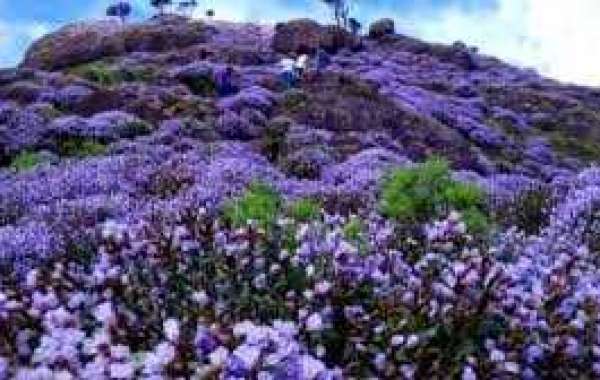- Dizzy with Miracle Garden Mubai locating in center of the Middle East desert!
- Amazing natural phenomenon: 'Rainbow Swamp' is the coolest thing you'll see all day!
- Breathtaking moment shows German kayaker run 32-meter waterfall
After 12 years, the Munnar Hills seems to be bathed in a dreamy shade of blue with the blooming of Neelakurinji (strobilanthes kunthiana) as the flower, rarest of the rare, does not grow in any other part of the world.




“Though Kerala expects eight lakh tourists to Munnar in this three-months flowering season, the Government’s effort to collect donations from outside the State and foreign nations, creating an impression that it is flood-ravaged, had spoil-sported the tourist inflow into Munnar, which was not affected in flood,” sources in tourism industry said.
“Due to the Government propaganda, the people outside Kerala feel that all places in the State were ravaged in the floods forcing them to choose tourist destinations other than Munnar, which was actually not affected in the calamity,” Sources felt.
“Compared to the room revenue of Rs 21.73 lakh from 85.45 per cent tourist occupancy in our hotel in August-2017, the room revenue in August-2018 dropped nose down to just 4.97 lakh from 11.91 per cent occupancy reflecting the poor tourist inflow in the current season”. Clouds Valley Hotel General Manager Mr V Vinod added.
“Neelakurinji blooms only in every 12 years. The last was in 2006. That is why Munnar and Western Ghats got into the list of Best Places to Visit in Asia in 2018 by the Lonely Planet,” he pointed out.
According to tribals, they used Neelakurinji bloom to calculate their age.
The flower, which has no smell or any medicinal value, can’t be seen anywhere in the world other than Western Ghats.




This endangered species grow at a height of 30 to 60 cm on hills slopes at an altitude of 1300 to 2400 meters where there is no tree forest.
The unique life cycle of the plant makes the hills a must-visit destination for travel enthusiasts.

Got a story for us? Need to tell us about something amazing you’ve seen or done? Want us to investigate something? Get in touch! Give us a Comment!














